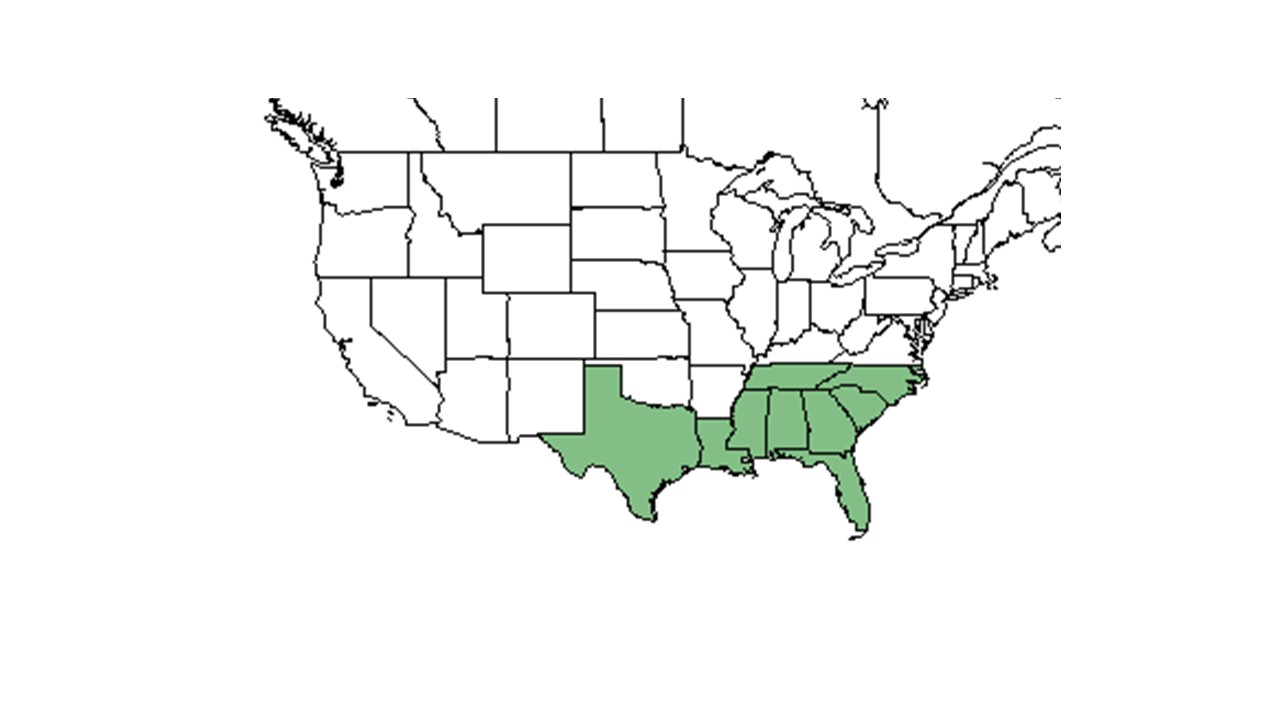Rhynchosia reniformis
| Rhynchosia reniformis | |
|---|---|

| |
| Photo was taken by Gil Nelson | |
| Scientific classification | |
| Kingdom: | Plantae |
| Division: | Magnoliophyta - Flowering plants |
| Class: | Magnoliopsida - Dicotyledons |
| Order: | Fabales |
| Family: | Fabaceae |
| Genus: | Rhynchosia |
| Species: | R. reniformis |
| Binomial name | |
| Rhynchosia reniformis DC. | |

| |
| Natural range of Rhynchosia reniformis from USDA NRCS Plants Database. | |
Common name: Dollarleaf (Nelson 2005).
Contents
Taxonomic notes
Description
Distribution
Ecology
Habitat
In the Coastal Plain region, R. reniformis can be found in burned longleaf pine-wiregrass stands, burned upland longleaf pine forests, loamy sands of longleaf pine-oak scrubs, sandhills, savannas, sandy open areas, sandpine flatwoods, pineflatwoods on limerock, recently burned scrubs of cutover pinewoods, and turkey oak sand ridges (FSU Herbarium, Nelson 2005). It can also be found in open powerlines, clobbered slash pine forests, fallow longleaf pine-scrub oaks, and railroad embankments. Associated species include Galactia mollis, Desmodium floridanum, Desmodium strictum, R. tomentosa, Pinus palustris, Aristida stricta, slash pine, sand pine, Lactuca floridana, Serenoa repens, turkey oak, Acanthospermum, Polygala and Onosmodium (FSU Herbarium).
Soil types include dry sand, sandy loam, loamy sand, limerock and gravelly sand (FSU Herbarium).
Phenology
It inconsistently flowers from April to September (Nelson 2005).
Seed dispersal
Seed bank and germination
Fire ecology
R. reniformis is a legume found in frequently burned longleaf pine savannas (Brewer and Cralle 2003, Hiers and Mitchell 2007). It was observed to resprout one month after a fire in July of 1993 (Pavon 1995). In a burning x no shade treatment, R. reniformis was found to have elevated levels of N2-fixation (Hiers and Mitchell 2007). Herbivory damage for R. reniformis does not increase with time since fire (Knight and Holt 2005).
Pollination
Use by animals
Diseases and parasites
Conservation and Management
Cultivation and restoration
References and notes
Brewer, J. S. and S. P. Cralle 2003. Phosphorus addition reduces invasion of a longleaf pine savanna (southeastern USA) by a non-indigenous grass (Imperata cylindrica). Plant Ecology 167: 237-245.
Florida State University Robert K. Godfrey Herbarium database. URL: http://herbarium.bio.fsu.edu. Last accessed: July 2015. Collectors: Loran C. Anderson, Robert L. Lazor, Steve L. Orzell, Edwin L. Bridges, Gary R. Knight, James R. Burkhalter, R.K. Godfrey, A. F. Clewell, Cheryl Vaughan, Robert Kral, Mable Kral, Gwynn W. Ramsey, R. S. Mitchell, Travis MacClendon, Karen MacClendon, Rodie White, Walter Kittredge, Kevin Oakes, Richard R. Clinebell II, Clarke Hudson, Charles M. Allen, Cecil R Slaughter, H. R. Reed, A. B. Seymour, F. S. Earle, S. B. Jones, Carleen Jones, S. W. Leonard, A. E. Radford, Henrietta Laing, Delzie Demaree, Lisa Keppner. States and Counties: Florida: Baker, Calhoun, Clay, Dade, Escambia, Flagler, Franklin, Gadsden, Hernando, Highlands, Jackson, Jefferson, Lee, Leon, Levy, Liberty, Madison, Okaloosa, Santa Rosa, St. Johns, Seminole, Suwannee, Union, Wakulla, Walton, Washington. Georgia: Baker, Grady, Seminole, Thomas. Mississippi: Clarke, Harrison, Ocean Springs, Pearl River, Pike. Louisiana: Allen. North Carolina: Harnett, Moore. Compiled by Tall Timbers Research Station and Land Conservancy.
Hiers, J. K. and R. J. Mitchell 2007. The influence of burning and light availability on N-2-fixation of native legumes in longleaf pine woodlands. Journal of the Torrey Botanical Society 134: 398-409.
Knight, T. M. and R. D. Holt 2005. Fire generates spatial gradients in herbivory: an example from a Florida sandhill ecosystem. Ecology 86: 587-593.
Nelson, Gil. East Gulf Coastal Plain. a Field Guide to the Wildflowers of the East Gulf Coastal Plain, including Southwest Georgia, Northwest Florida, Southern Alabama, Southern Mississippi, and Parts of Southeastern Louisiana. Guilford, CT: Falcon, 2005. 184. Print.